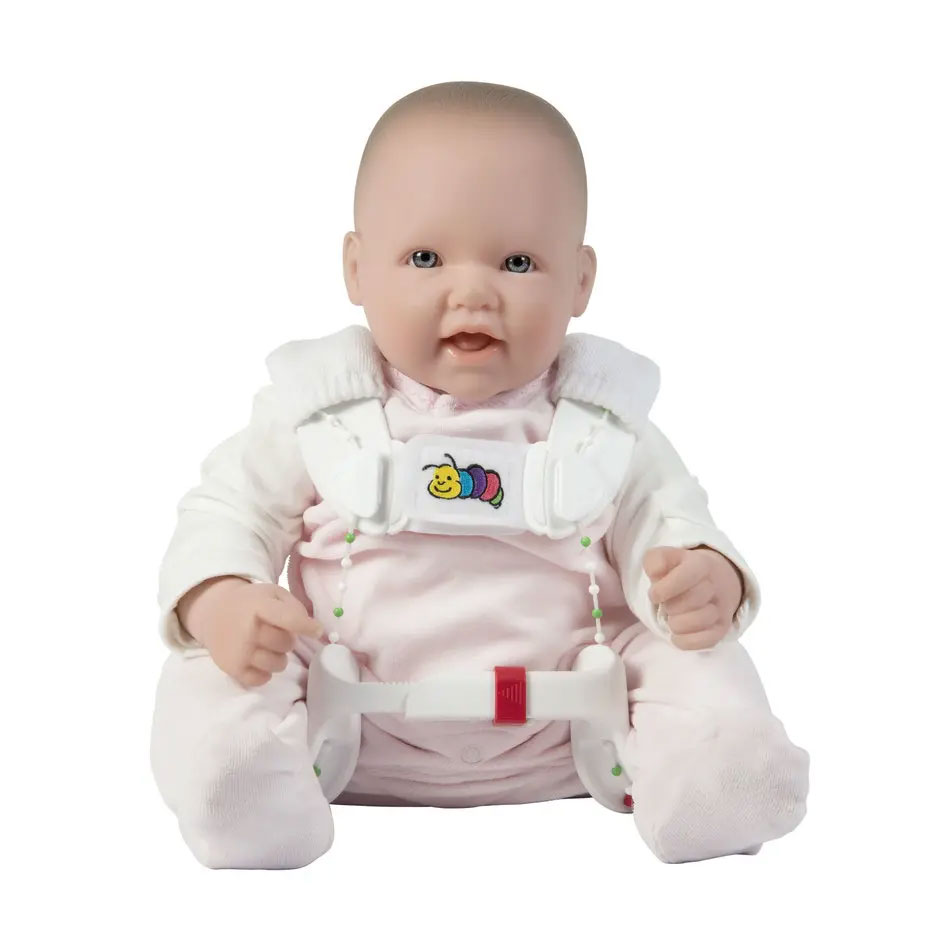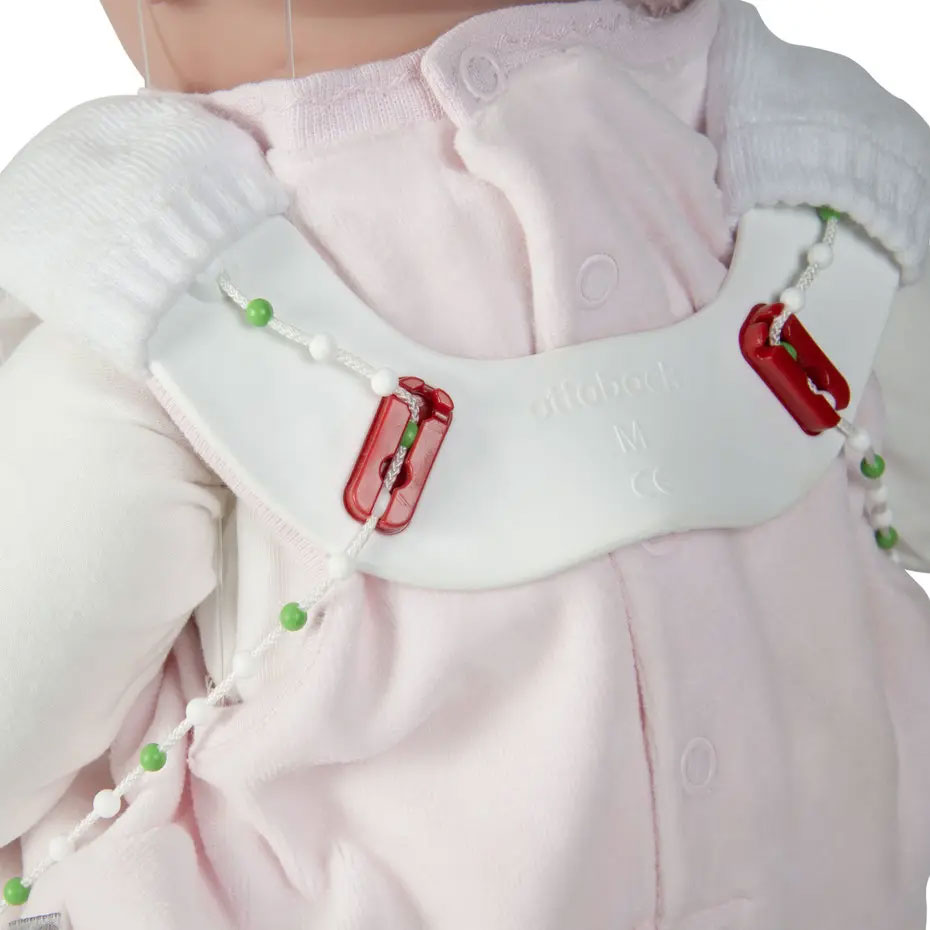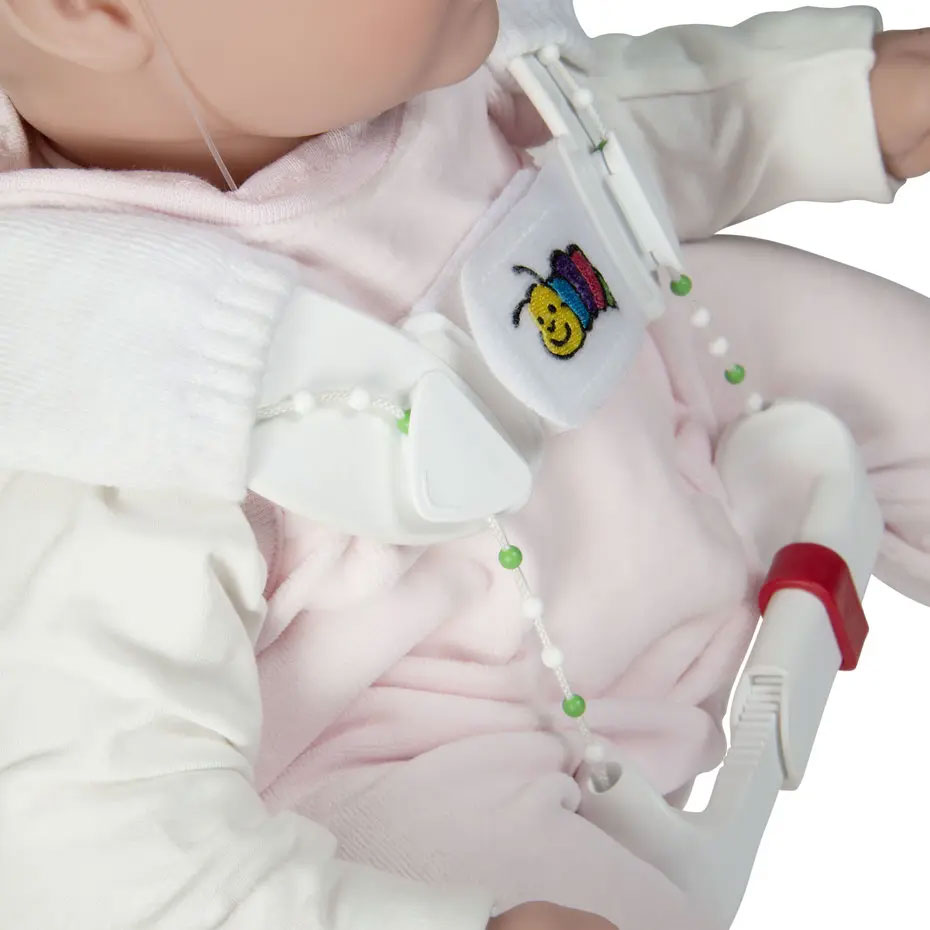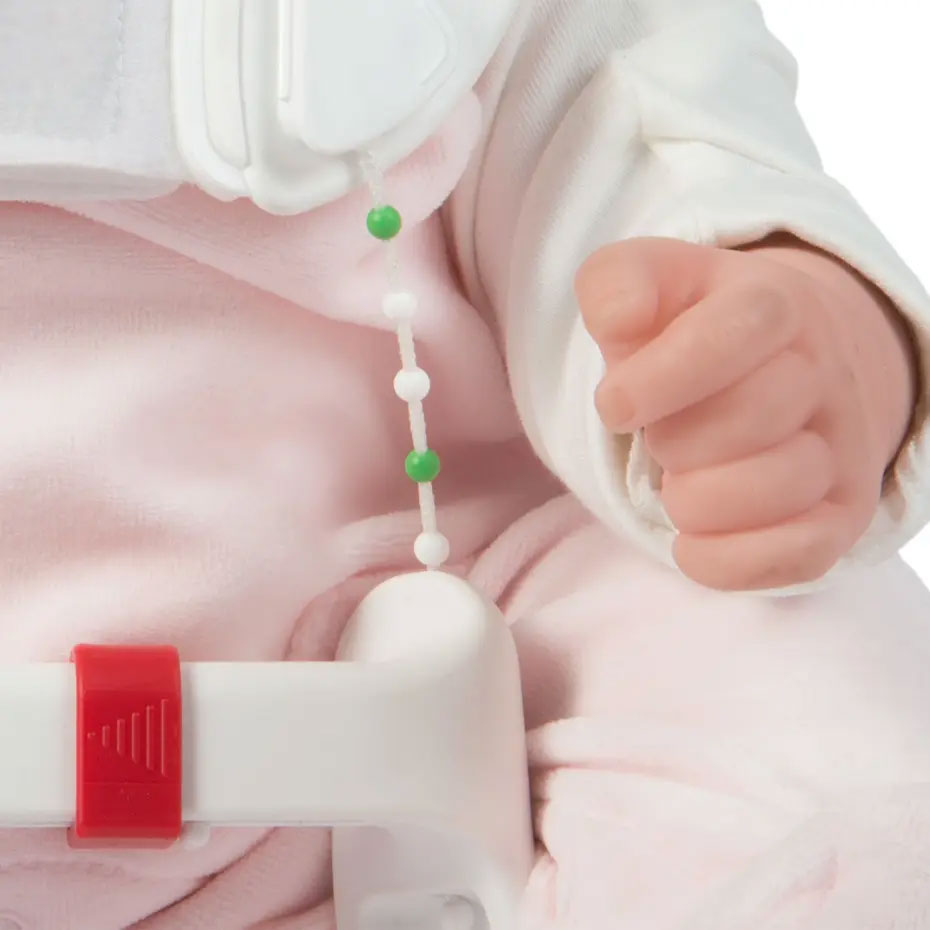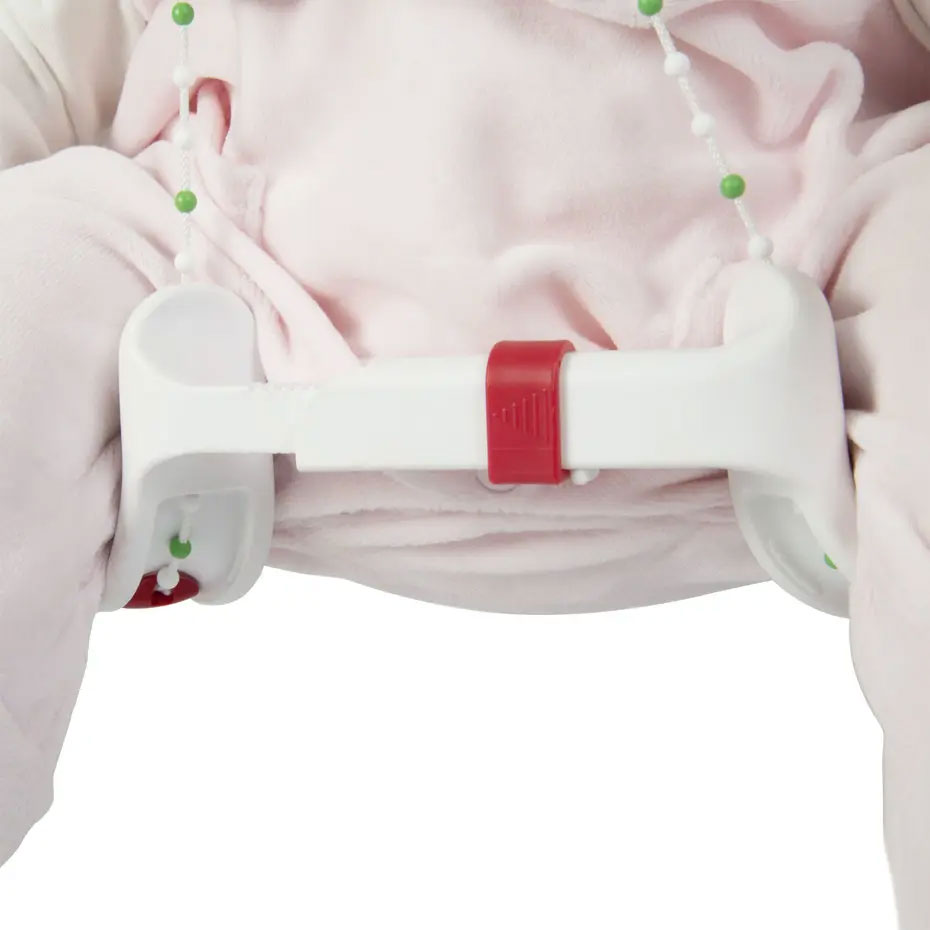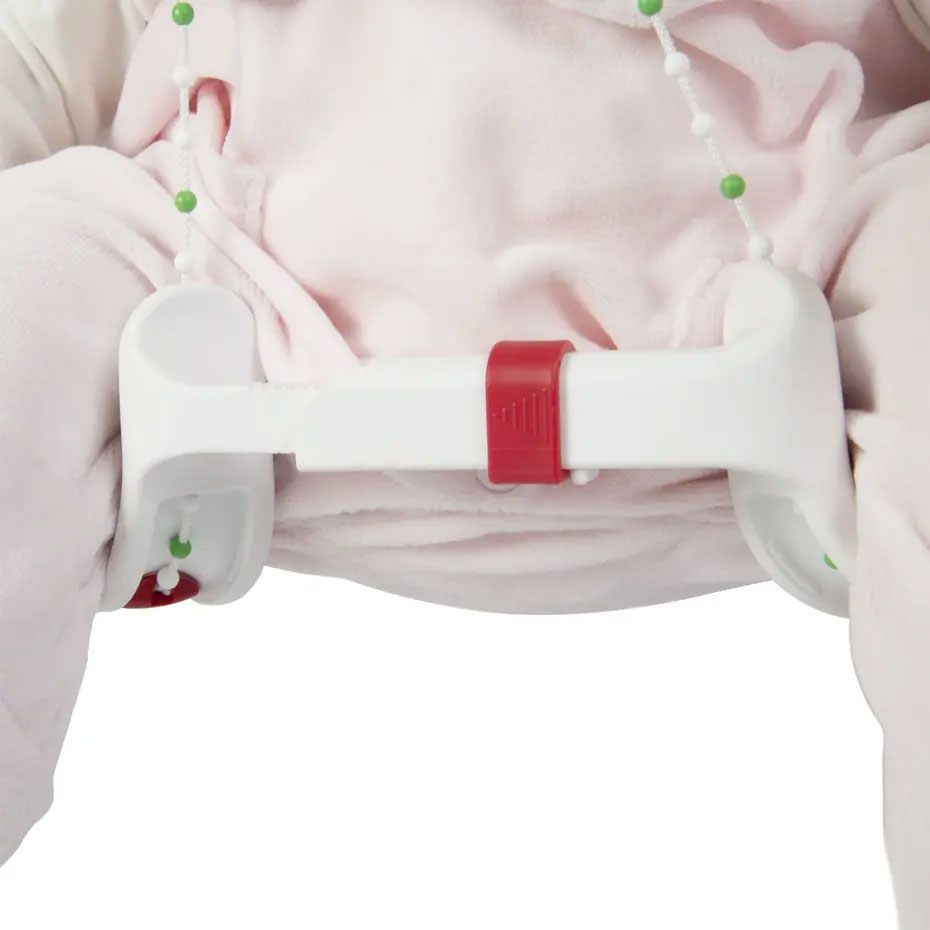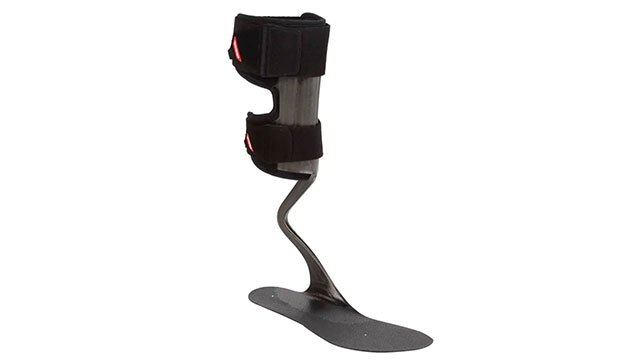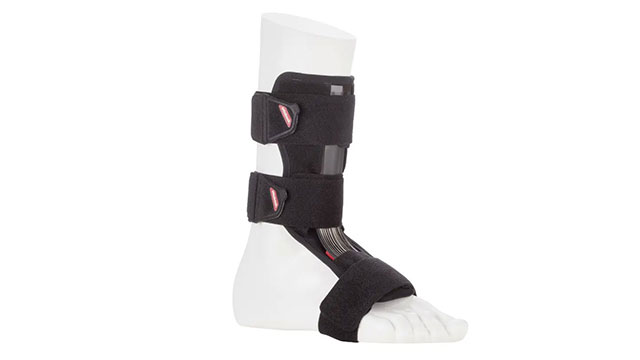Helping your baby’s hips mature properly
When your baby is diagnosed with what is known as hip dysplasia – the delayed development of the acetabulum or hip joint socket – your doctor will talk to you about suitable treatment methods and the duration of therapy.
The Tübingen hip flexion and abduction orthosis according to Dr Bernau establishes the ideal conditions to ensure that your child’s hip joint matures completely and without any problems. The hip position that is most favourable to development is known as the “seated squat position”. It is the same position which the child assumes in the womb before birth. The orthosis flexes your infant’s hip joints at an angle in excess of 90 degrees and spreads them slightly. Even if this appears unusual at first, it is just an extension of the pre-birth phase. This allows your baby’s hips to mature under the same favourable conditions as they would in the womb.
Manufactured: OTTOBOCK
User group: children
Production: Assembled
Terms and Conditions: Hip dysplasia
Applications: Bracing & Support/ (OTS)
Material: Plastic
Benefits at a glance
Tubingen hip flexion and abduction orthosis – moving safely, growing naturally
The Tubingen hip flexion and abduction orthosis has been successfully used to treat hip dysplasia for over 30 years. In Germany, it is by far the most frequently used orthosis. Its effectiveness has been scientifically proven.
The Tubingen hip flexion and abduction orthosis is designed in such a way that it can easily be worn anytime and anywhere – whether your baby is in an infant carrier, a child seat or going swimming. It is completely washable and even resistant to salt water, making it a reliable companion for your baby’s first swim in the sea as well.
The position that your baby assumes when wearing the Tubingen hip flexion and abduction orthosis is familiar to them. This was previously their favoured position in the womb. It usually ensures optimum development of the hip joints. If this doesn’t occur as it should, the orthosis corrects the problem after birth.
During the initial fitting of the Tubingen hip flexion and abduction orthosis, your doctor will explain exactly how the orthosis works to correct hip dysplasia and how to apply it. Only operate the hook-and-loop closure and the white clips. After just a short time, putting it on will feel as normal as changing a nappy.
It’s completely normal for babies to resist their new companion at first. They may cry more frequently in the first few days and appear fussy. After just a few days, your baby will get used to the orthosis. If they continue to resist it, talk to your doctor.
Answers for you
Most babies get used to the new situation very quickly (1 or 2 days). Some babies do protest and need more time. Should your baby fight the orthosis for a long time, talk to your doctor and have the orthosis checked.
Ultrasound exams do not involve the use of radiation. They are entirely painless and are a standard examination method today.
Normally, the hip flexion and abduction orthosis should be worn day and night – that is, for about 23 hours a day (except when changing and bathing).
No. Your baby’s general motor development, for example when they learn to turn their body, is not delayed compared to other children.
The product weight of the Tubingen hip flexion and abduction orthosis is 147 g in size small, 177 g in size medium and 219 g in size large.
Yes, this is no problem with modern child seats. Just be sure that the belt is below the spreader bar.
Of course you can! There is nothing special to be aware of when cuddling or in any other situation.
Yes. The orthosis is even resistant to salt water. So splashing around in the sea on holiday won’t be a problem, either. The terry cloth covers and hook-and-loop closures are also designed for contact with water, but should be rinsed after contact with salt water.
Yes. Like the Tubingen hip flexion and abduction orthosis, baby carriers are based on a baby’s natural position. For this reason, your baby can continue to wear the orthosis in a baby carrier.
The orthosis will generally be more comfortable when worn with clothing. For light clothing, e.g. on warm days, please use the fabric covers available from your medical supply company for the leg supports. You should make sure your baby wears at least a onesie or a shirt below the orthosis.
Once the hip measurements have reached the normal range, the process of “weaning” your baby off the orthosis begins. In other words, your doctor gradually reduces the amount of time your baby wears the orthosis. At first, it is removed during the day and worn only at night. Your doctor will decide when you can stop using the orthosis entirely.
Children with hip dysplasia can often only spread their legs to a limited extent. With unilateral hip dysplasia, the gluteal or genital folds may be slightly displaced. However, it is unlikely that a layperson will be able to detect this malformation. For this reason, a routine ultrasound examination is carried out for babies in Germany, during which the hip joints are checked.

